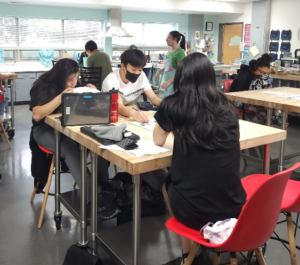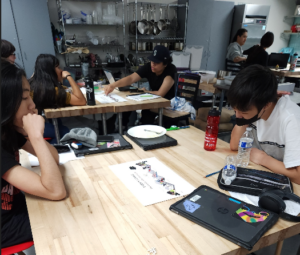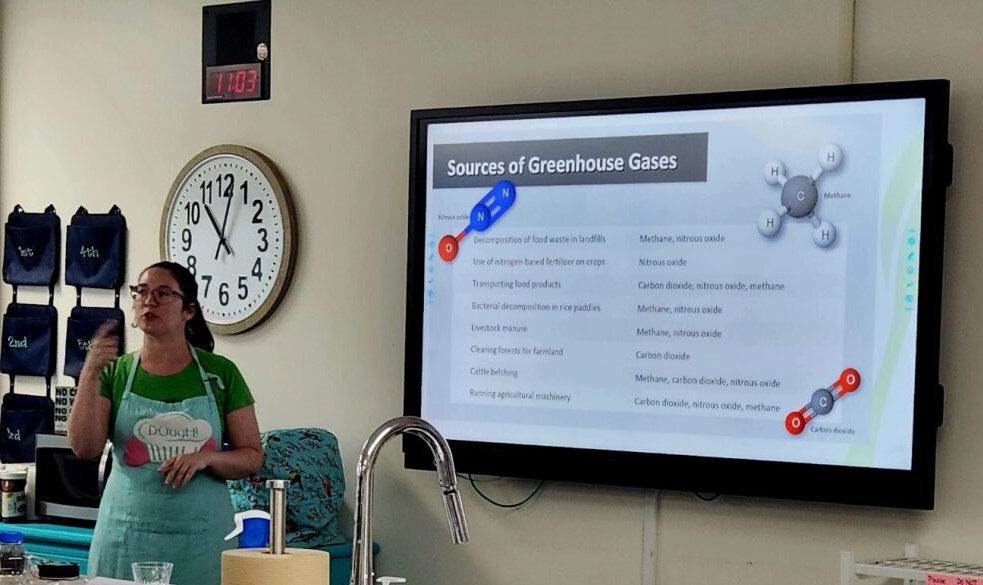When you think of a culinary class, you might imagine students discovering the proper way to chop onions. Which students in Tess Koning’s class do – along with learning the amount of greenhouse gases emitted in different phases of food production and distribution and how food waste contributes to climate change.
Koning is a Technology Teacher on Special Assignment (TOSA) for Bethel School District. Her culinary class at Steilacoom High School goes beyond food preparation to explore the inherent wastefulness of the corporate food production cycle. This year, she also began incorporating PEI’s Food Waste storyline into her curriculum. The class is part of Pierce County Skills Center’s summer school program.

“I found the Food Waste Unit to be a fantastic addition to my classroom,” says Koning. “I always spend the beginning of classes trying to help the students understand the issues with food waste, and how we do our best in the class to avoid it. I’ve struggled with students taking that to heart in the past. Things that we would create in our food labs would end up in the trash at the end of the day. I saw a pleasant shift in this session, and many of the students were regularly taking any leftovers with them – to feed their families, to show work they were proud of, but also to avoid wasting a product they often might have wasted in the past.”
In one lesson, she invited students to consider in which phase of the food cycle the most waste occurs: production, packaging transportation, or consumption. They were surprised to discover that 83% of all food waste happens during production. “On the retail side, once you get to the grocery store or the restaurant, that’s only around 6%,” she told them.
Once students understood how much energy and how many resources go into creating food, it changed their perspective on wasting it. “So, all that work to get the food and then we just throw it out?” said one. “Seems dumb.”
“I saw a pleasant shift in this session, and many of the students were regularly taking any leftovers with them – to feed their families, to show work they were proud of, but also to avoid wasting a product they often might have wasted in the past.”
— Tess Koning, Technology Teacher on Special Assignment, Bethel School District
“The food system is a complex network that covers the entire process of food – from its growth and harvest, through processing and transportation, up until its consumption and disposal,” said another. “Wasting food also results in wastage of other crucial resources like labor, water, and energy which are used in the process of getting the food to our plates.”
Students also heard a presentation about factory farm practices from the Factory Farm Awareness Coalition and explored indigenous attitudes about food through a lesson called ‘Honorable Harvest.’

“It was cool to have some students that know already about the food system share some of their insights with the class,” Koning notes, “like one of my students who lives on a farm, raises chickens and cows, and grows fruits and veggies, compared what his experience is like to the factory farms most people are getting their meat and produce from.”
If Koning has her way, the impact will continue well after the class ends. “Many students had never considered all that goes into the growing, harvesting, producing, and distributing that takes place before the food ever ends up in the store or on their plates,” she says. “I hope that they come away from this experience being more thoughtful about all of the systems and people involved in their food from beginning to end.”
